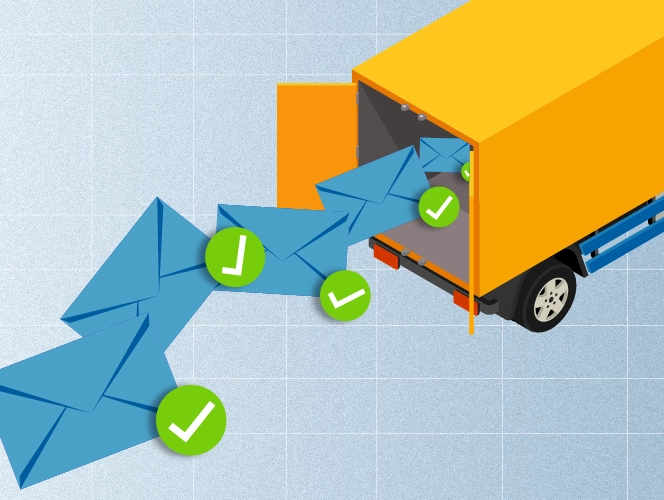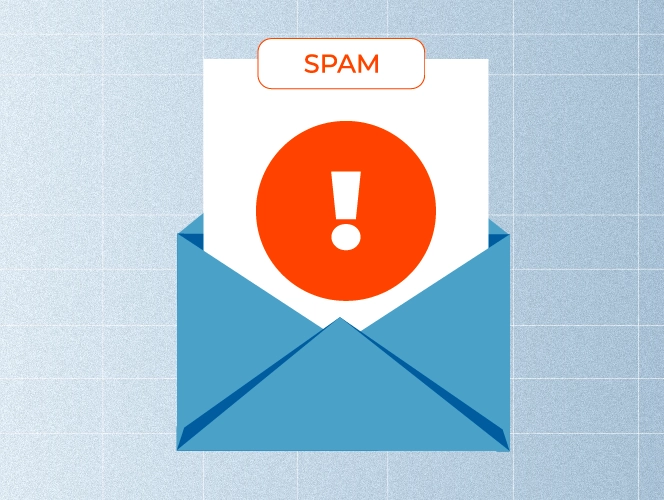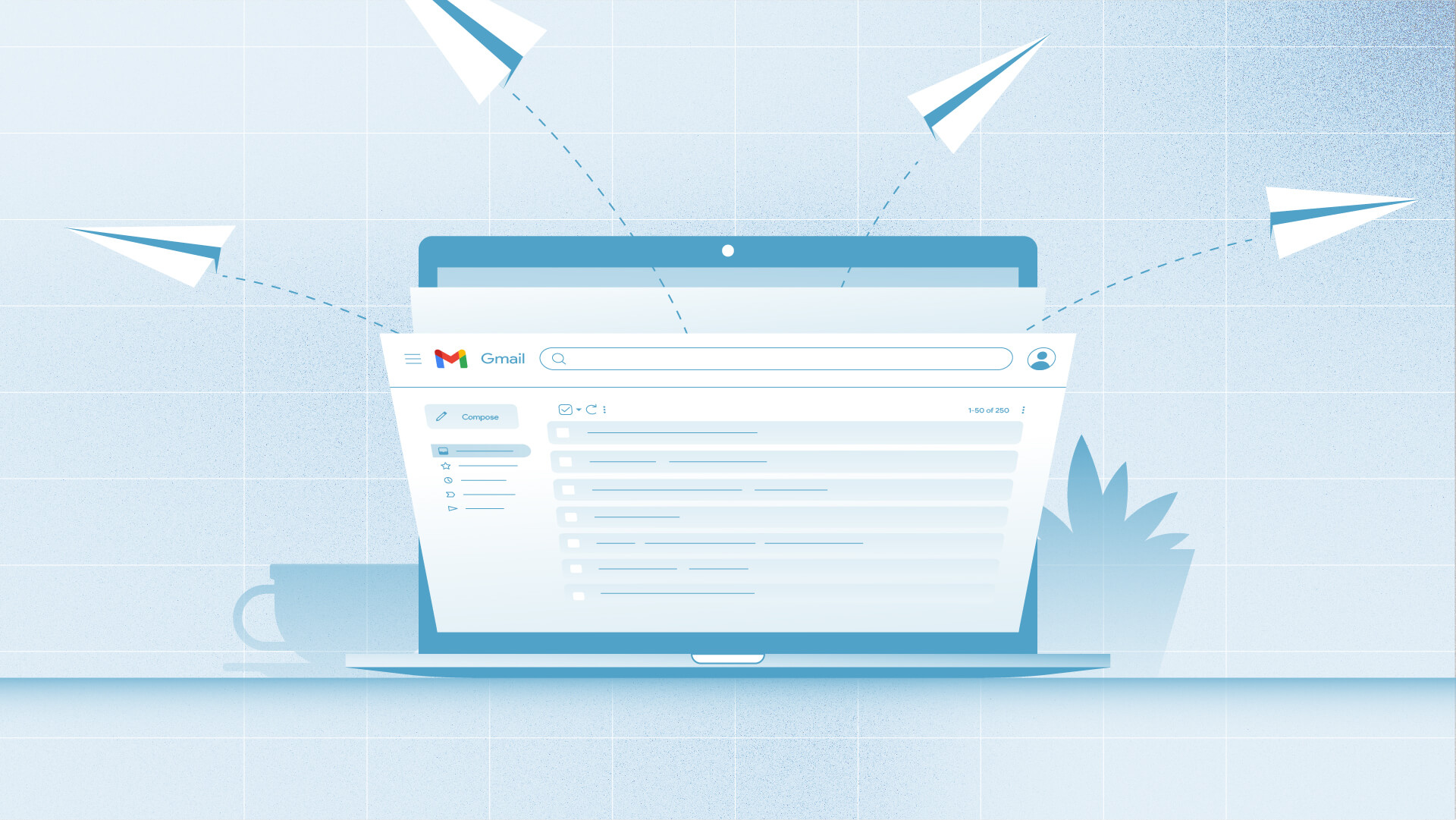Will you be disappointed if your perfectly-composed emails aren’t seen or read? Well, most emails face it if the sender doesn’t check the necessary points. To deliver your first efforts to the recipients’ inboxes, you should work toward improving cold email deliverability.
“Is it when the email gets sent successfully?” you’ll ask. Not so much so, will be my answer.
Being delivered doesn’t fully concern itself with deliverability.
Being delivered simply means your email has been sent and ended up somewhere in the recipient’s mailbox.
But where? That’s our important question.
And that’s what deals with cold email deliverability. What is the definition of email deliverability? That’s when your email ends up in the recipient’s inbox rather than somewhere random, like spam or promotion folders, dooming your campaign to failure. Utilizing tools like the Mailmeteor spam checker can ensure that your emails are not mistakenly marked as spam.
When sending cold emails, cold email deliverability must be a priority. Well, you want your efforts to be noticed. Deliverability checks will ensure your cold email efforts are not lost.
The biggest threat to email senders is the spam box. According to the statistics, 45% of email traffic as of December 2022 has been spam messages. An average worker is reported to receive between 100-120 emails daily. Running checkers like Mailmeteor spam checker becomes more critical than ever.
Who wouldn’t take measures against the flow of unwanted messages?
First, let’s discuss more deeply the difference between email delivery and deliverability rates.
Email Delivery Rate vs. Email Deliverability Rate
Among email senders, there usually needs to be more clarification on the terms: delivery and deliverability. Sometimes, when people hear that the delivery rate is high, they assume the message got to the end user and should recline waiting for the reply. Yet, things should be made clear by a simple definition.
Email delivery, what’s the definition? It’s when your message is delivered from your email service provider (ESP) to the receiving incoming mail server without bouncing.
Email deliverability: What is the definition of email deliverability? It is when your message gets into the recipient’s inbox after it passes through the spam and scam check stages.
The email delivery rate is calculated by dividing the number of successfully delivered emails (excluding bounced emails) by the total number of emails sent and multiplying by 100.
So if you hit the send button and wait for a response, it never comes. It’s not because the recipient ignores you but because your message landed in a completely wrong box.
Sadly, not in the inbox.
Hence, as an email sender, you need to understand the importance and key aspects of deliverability to nail every email sent. The Mailmeteor spam checker is a tool that can assist you in ensuring your messages are on the right track.
The importance of email deliverability for outreach
There is great importance in deliverability when it comes to outreach. The practices will prove. The higher the deliverability rate, the more your chances to reach targets with cold emails.
Now that you have an answer to the question “What is the definition of email deliverability?” you understand that cold email deliverability is especially important and it plays a huge part in email marketing strategies. That’s because you write to new audiences, people you have no previous contact with. You reach out with little knowledge of the person. Well, maybe their email address and position don’t correspond, and it’s not the right person to talk to, send a request, or offer. Thus, deliverability determines success in email marketing. By leveraging tools like the Mailmeteor spam checker, you can navigate these challenges more effectively.
The purpose of an email outreach varies from industry to industry, from organization to organization. Our focus is SaaS link building, where the purpose of outreach is mainly to attract new collaborations, make new connections, or offer link exchanges (speaking of SEO).
Additionally, many businesses nowadays opt to outsource link building to specialized agencies or freelancers, leveraging their expertise and resources for more effective and efficient results. In this process, as well, when you are making new collaborative connections, email deliverability should be maximized.
So, the following article will be based on the insights from link building outreach practices to instruct you on how to fix email deliverability.
7 tips to enhance cold email deliverability for backlink outreach
Now you have an idea of what is the definition of email deliverability. For a successful email outreach, you must be armed with the tactics to increase your cold email deliverability rate. The methods we will discuss will lead you to a perfect process of sending outreach emails. The tips can be divided into two parts: contextual and technical.
In the contextual part, you should focus on the following to make your emails stand out and increase deliverability rates.
Avoid spam words
Avoiding the spam folder in Gmail is one of our primary watch-aways. When checking for spam, the red flag checkpoints are:
- Listed spam trigger words
- The absence of an unsubscribe button
- Inaccurate fonts, colors, layouts
- Many capital letters or extreme punctuations in the content
Since spam words are the most common runners, learning them will help avoid the triggers. Until we get to the words, it’s important to note that spam doesn’t merely catch the words but the context around them. As long as you use words naturally and responsibly, fitting them in your context, the spam folder will not “catch” the message.
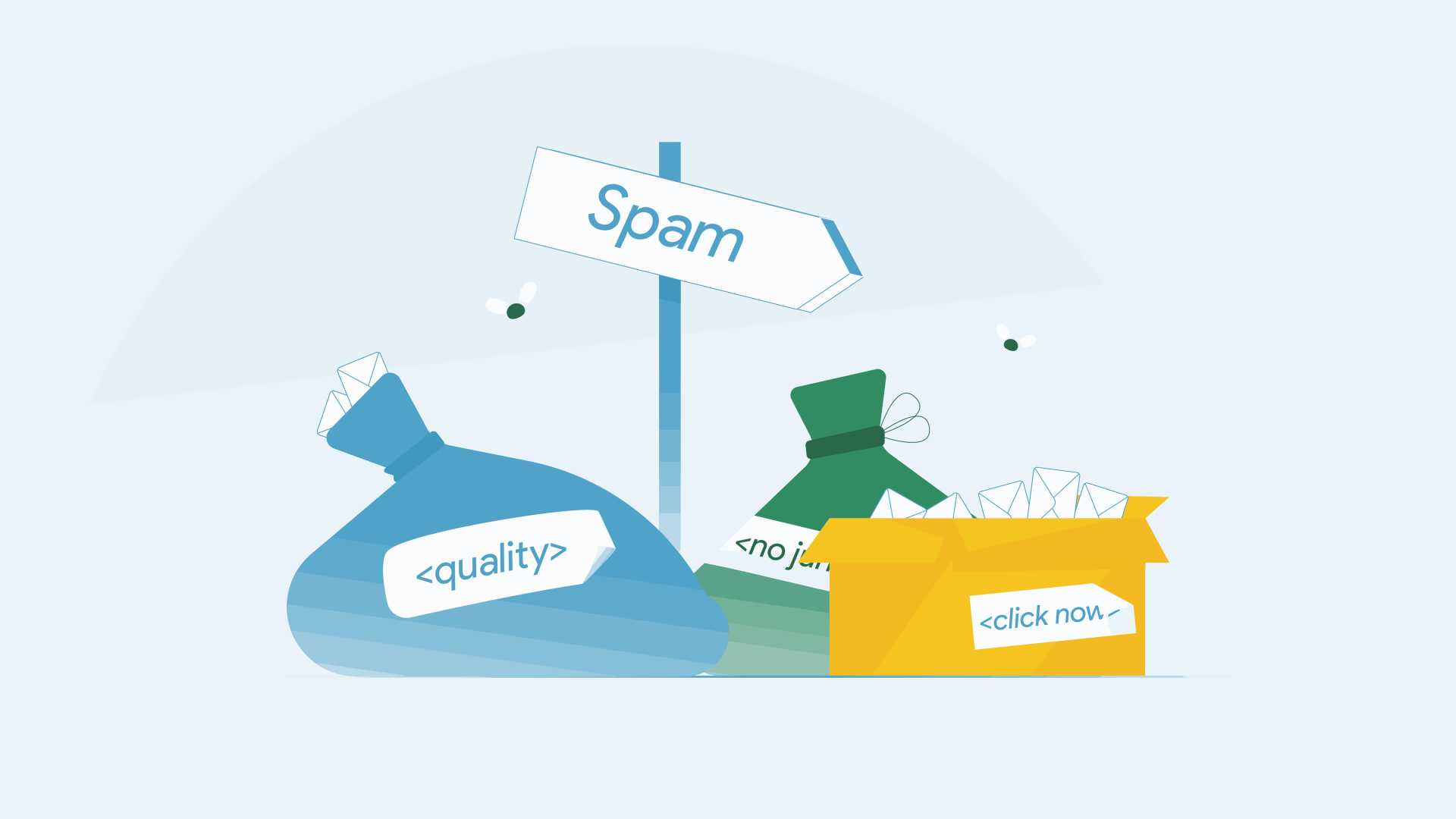
However, avoid:
- Exaggerated words (e.g., number one, 100 %) because who can assure these exaggerations?
- Pointless urgency (e.g., order now, click now) because they are unnecessarily overused.
- False concepts (e.g., nothing hidden, no junk) because they oppose themselves.
You already formed an idea of what to avoid in the message to avoid getting caught by the spam catchers. Pay close attention to the metrics, like the Mailmeteor spam checker results.
Make it catchy
Marketing is all about mindful attraction. With your message, you invite the recipients to action. Your message should consequently be catchy to hook the recipients and grab their attention.
Catchy emails are crucial to engaging the reader and succeeding with the message. Being catchy refers both to the cold email subject lines and the content. A catchy email means an interesting one. Your message and the subject line leading to the message must captivate and keep captured.
Some examples of catchy subject lines are below:
- “Your link is almost live.”
- “Your new partner is here.”
- “Your backlinks are waiting for you.”
As you see, the main point is to incite curiosity, speak friendly, and convey the message in one simple short sentence.

With each email sent, you have one primary purpose – to lead the recipients to action. Email recipients should be intrigued and smoothly directed to the action to complete it. Thus the message should be kept attention-grabbing and easy to digest.
The content, in turn, should include powerful words and be short and insightful. Reading the first sentence, the recipient should see the value behind your offer. You must wrap your offers attractively before hitting the send button.
Avoid explicit promotion
Of course, everyone’s goal is to promote their services or, in other cases, the products being offered.
How could you not use promotion? Promoting something refers to the activities done to raise public awareness. However, explicit promotions can adversely affect your marketing activities.
When sending a cold email, you don’t want the recipient to run away before understanding your offers. Here comes the value into play. Direct promotion won’t serve your cold email campaign very well; however, inexplicitly offering the value behind the offer is a good tactic.
Next to the contextual tricks, there is the technical part you must invest in to increase the email deliverability rate. In the technical part of making emails stand out, there are things to pay close attention to. Let’s discuss the tips for strengthening the technical aspect of your emails.
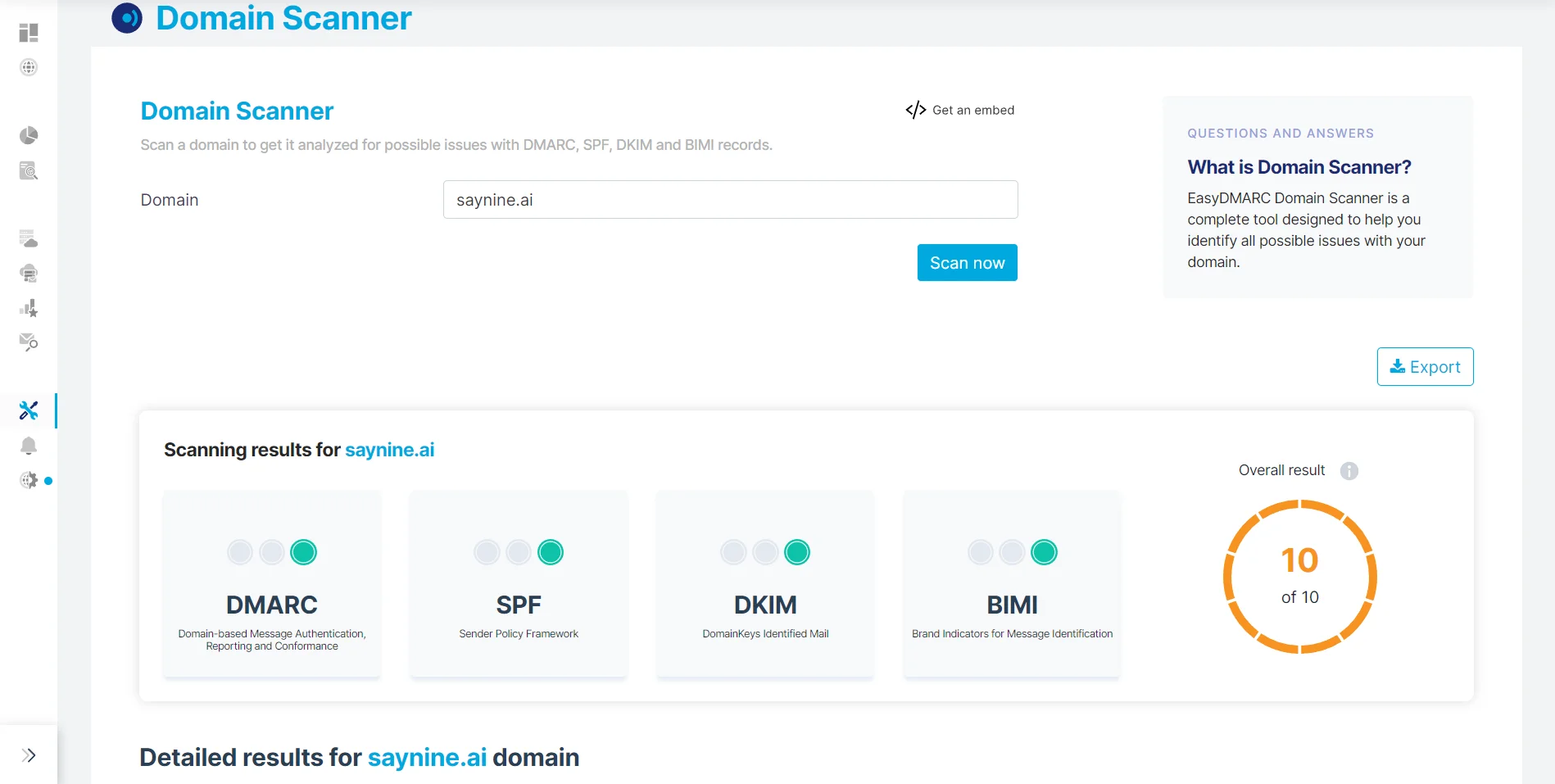
The Domain Scanner tools of EasyDMARC analyzing SayNine’s domain. It is trying to detect any issues connected to security, scanning for DMARC, SPF, DKIM, and BIMI.
Use various tools
Tools arm you in any digital marketing campaign, including a content marketing campaign, social media marketing campaign, and, of course, link building campaign.
Email outreach is no exception. The whole process can be automated by your choice. Yet, specialized tools should be included in the email-sending processes to focus on the deliverability rates. Utilizing CRM email automation can enhance your email outreach by ensuring your emails are sent at the optimal times, improving deliverability, and tracking engagement for better results.
The tool of our choice that our link building outreach practices benefit most is Mailmeteor for Gmail.
Starting from composing an email through sending, tracking, and following up, Mailmeteor should be a good choice, it should also come to help with Mailmeteor spam checker. The features we use most to increase the effectiveness of our emails include:
- Sending emails;
- Scheduling messages;
- Following up and automating the follow-ups;
- Checking if the email content is promotional or contains any spam words that may be caught by the spam;
- Tracking the open rate, bounce rate, and who has read or responded somehow.
Such features make our email outreach smoother and more effective regarding tracking and improving our mailing practices. Deliverability, engagement, and conversion rates usually rise tremendously when tools like Mailmeteor are applied in the mass mail-sending process.
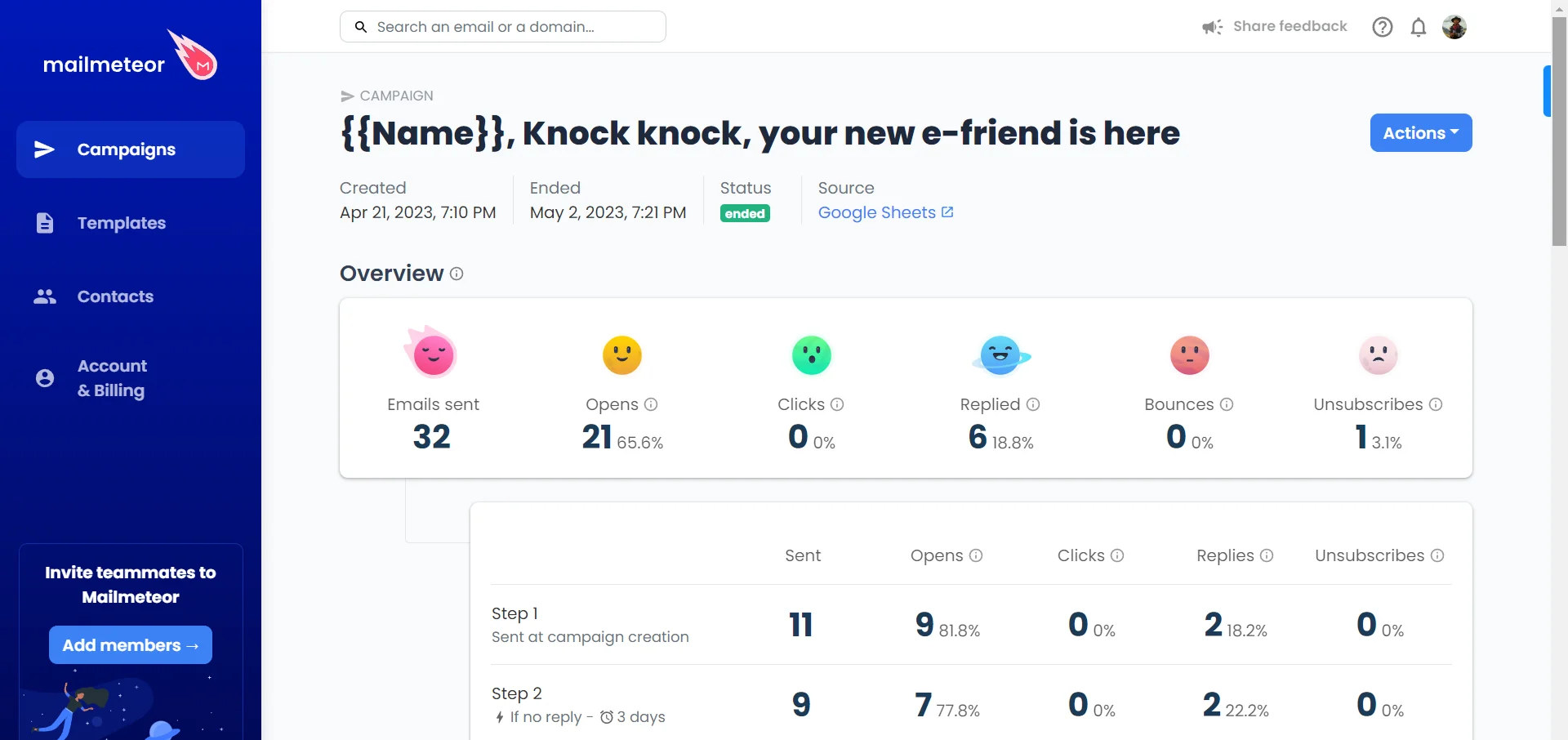
Verify the Email Addresses
The quality of your email outreach hugely depends on the quality of your email lists. You will improve email deliverability if emails in your email address list are verified to be correct. The bounce rate increases when you reach out to weak, unsecured, or non-existing email addresses.
Before hitting the “send” button, your first technical check should be to verify email addresses. You should aim for the right recipients, which will save effort and time. Knowing how to decrease bounce rate by verifying email addresses is key to improving your email deliverability.
Throughout the email marketing practices, we have come up with a feature on Google Sheets that helps verify the emails. Let’s disclose! Smart chips is the feature that simplifies our email checking. Smart chips are smart tags that you can embed into Google Sheets. This is an excellent feature from October 2022 Google updates.
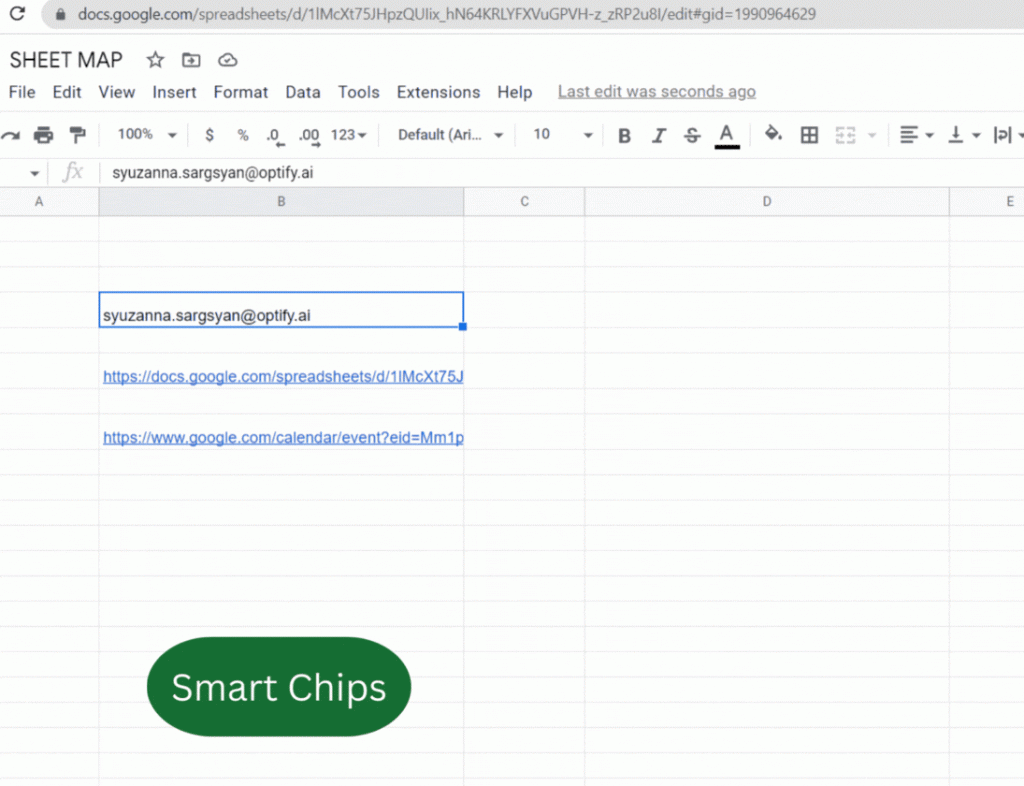
The smart chip tags allow you to tag people, files, events, or dates in the sheets. You can tag if those are real or existing. So if you want to check a bulk of email address variations, you can use the tag smart chips feature.
All there is to do is to go Insert > Smart chips > Convert to people chipenter or insert an “@” to add:
👤 People with a name or email.
📎 File with the file name or related keywords.
📆 Event with the calendar event name or related keywords.
The smart chips method helps us be more confident in data validation, outreach and safe for cold email deliverability.
Check email security
There are many issues behind landing in the recipient’s spam folders. Not only is the deliverability affected because of email structure or high bounce rate from your domains, but it is also greatly influenced by security measures and protocols, and your domain reputation.
You should check your dedicated domain’s IP address’s spam score. Many tools and software, for instance, Mailmeteor spam checker, are made for this check-up. These tools analyze the reputation of your IP address and provide you with a spam score or rating. A higher spam score means a higher likelihood of your emails landing in the spam box.Your domain’s authority score matters. So, make sure to give a guarantee card to your domain. As well as take the necessary security measures – set up SPF, DKIM, and DMARC to leave the spam box to rest.

At SayNine, we utilize EasyDMARC’s services for the DMARC report and check the IP address with the Reputation Check tool, which analyzes your domains against popular blacklists.
SPF, the standard email authentication method, helps determine the mail servers and domains that are authorized to send emails from the name of your domain.
DKIM, or DomainKeys Identified Mail, is an online signature. This method ensures the receiver of an email knows that the message was sent and authorized by the domain owner. It keeps against phishing or other fraudulent activities from your domain.
DMARC, Domain-based Message Authentication Reporting & Conformance, verifies the email sender based on the Domain Name System (DNS), DomainKeys Identified Mail (DKIM), and Sender Policy Framework (SPF) protocols.
To check the blacklisted IP addresses, you can simply Google it. The blacklisted addresses will appear in the results. So you can easily discover if the deliverability issues threaten your emails. If you don’t want to spend extra resources on tools and software, this is a quick way of conducting a check-up.
The three together are like pass cards to the end users getting your cold emails. You show the card; your email is approved in the inbox.
Let’s recap the technical checkup steps:
- Verifying email lists
- Ensuring your IP isn’t blacklisted / Domain authority is at high level
- Setting up security measures (SPF, DKIM, DMARC)
Check email deliverability
A “company-invented” method we use to check outreach email deliverability in our link building outreach practices is self-check. Let’s open the brackets. After all the steps are taken, we must ensure the outreach emails are delivered to the inboxes. The self-outreach method comes into practice when we are sure to have followed the steps mentioned above.
This is a trick you can use. We have created around 20 random emails belonging to our teammates. When our message is ready, we check the deliverability by sending it to our own emails. We can execute the real outreach campaign if the message lands smoothly in the inbox.
Bonus tips to increase email deliverability
There are more tips next to the already-discussed ones to compose strong and impactful email messages that go a long way and serve the purpose. To improve your email journey, send better outreach messages, and tackle email practices, we have gathered more advice from our experience so that you learn how to fix email deliverability.
- Give value, not attraction: We talked about how important it is to attract your audience. Only attracting is useless if you don’t offer practical value. So, your focus should be being helpful for your audience, arming them with really useful information, tools, and services. And finally, ensure presenting the value attractively. When outreaching for link building, for instance, the message should emphasize the importance of link building and why the receiver should care for the investment.
- Don’t make it trashy: Some marketers think sending emails with many visuals is a bonus point. Like image-only emails, filling your message up with pictures is a spam trigger. Moreover, images make it trashy since they result in unopened messages.
- Have good templates: Pre-thought-out templates are essential for your convenience and the smooth mailing process. Compose outreach and follow-up templates. Keep them up your sleeves. Your templates should also incite the reader’s interest. Invest time in composing insightful email templates.
- Use emojis: In 50/50 cases and for specific outreach campaigns, emojis can be game changers. When you know that the context is conversational and whoever you are reaching out to won’t take the emojis seriously, will smile and hit it off, go for contextually relevant emojis.
- Influence human psychology: It’s not bad to affect how and why people think certain things. First, everything you say to an individual affects them psychologically. The emails you send out and people read affect how they feel about the actions they take. The chosen words, numbers, structure, and colors matter how the audience will view your message.
Elevate your cold email deliverability rate
The best cold email deliverability experience starts with composing a superb email, strengthening your mailing domain technically, and arming yourself with the best tools and expert advice. As we discussed, deliverability for an email is when your message lands in the recipient’s inbox rather than in the spam or promotions.
It’s important to distinguish between email delivery and email deliverability, where the first is the email getting out from your domain and arriving somewhere in the recipient’s mailbox. In contrast, the second is that your email arrives in the inbox and it measures the effectiveness of the emails sent.
In learning how to fix email deliverability, we discovered that the process consists of contextual and technical parts. So, you should both compose a catchy, attractive, well-structured email and ensure your domain security, setting up the necessary protocols, like the SPF, DKIM, and DMARC, which in practice have shown an enormous positive impact on the domain reputation. Additionally, by using tools such as the Mailmeteor spam checker, you can monitor the effectiveness of your email campaigns and improve your deliverability rate.
Don’t bet a chance on arriving in the inbox of your audience. Follow the pro tips we have covered, and let us know how your outreach emails are going!
FAQ about cold email deliverability
How to check email deliverability?
The most popular ways to check email deliverability are the following:
– Use an email deliverability checker tool.
– Review your email stats.
– Monitor your spam complaints.
What is bad email deliverability?
Bad email deliverability is when your emails are not delivered to the inbox of the recipients. This can occur for a number of reasons, including:
– Spammy messages that get blocked. If your emails are flagged as spam, they will be sent to the spam folder or blocked altogether.
– Bounces occurring when an email cannot be delivered to the recipient’s email address.
– Complaints which is when a recipient marks your email as spam.
How does the email deliverability rate differ from the open rate?
Email deliverability rate and open rate are two important metrics that measure the success of an email marketing campaign.
Email deliverability rate is the percentage of emails successfully delivered to the recipient’s inbox. This means the email has passed through all the spam checks and is not blocked or marked as spam.
Open rate is the percentage of emails that the recipient opens. This means that the recipient has opened the email and seen the content.

Quiz Time
Let's put your knowledge to the test.
Leave your email below to get a SayNine certificate!
Are you sure?

